Mt. Lhotse Expedition
The Lhotse Expedition is a challenging and awe-inspiring journey that takes climbers to the fourth-highest mountain in the world. Mount Lhotse stands at an impressive elevation of 8,516 meters (27,940 feet) and is known for its proximity to Mount Everest. It is located on the border of Tibet and Nepal, forming a part of the Everest Massif.
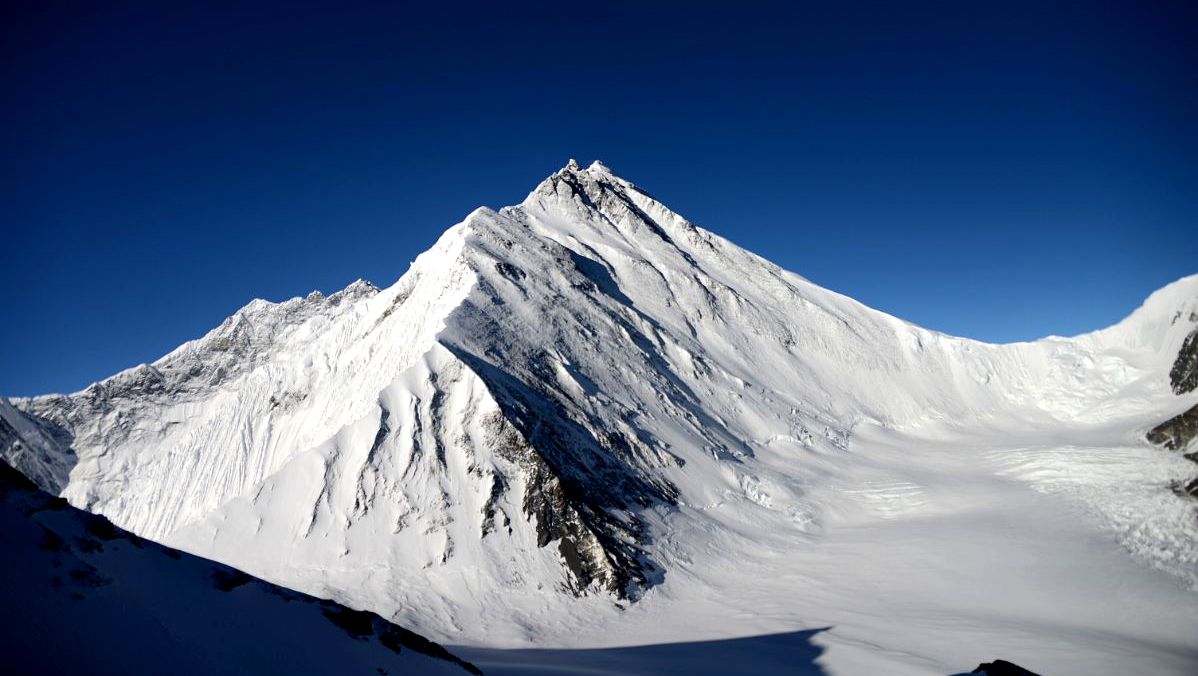
The expedition follows a route similar to that of the Everest Expedition, including the renowned Lhotse Face. Climbers begin their journey at the Base Camp of Everest and progress through the Khumbu Icefall. They traverse from Camp I to Camp 4, with Camp 1 situated at 5,900 meters and Camp 2 at 6,400 meters, offering magnificent views of Lhotse. From there, climbers face the challenging Lhotse Couloir, a steep ice gully on the west face of the mountain. The couloir presents a demanding section of the climb with its steep slopes reaching up to 80 degrees. Climbers must navigate rocky areas such as the Yellow Band and the Geneva Spur along the way. Snowfall can pose additional challenges during the ascent.
Mount Lhotse consists of three peaks: Lhotse Shar (8,383 meters), Lhotse East or Lhotse Middle (8,413 meters), and Lhotse Main (8,516 meters). The first successful ascent of Lhotse Main was achieved in 1956, while Lhotse Middle was conquered much later in 2001. The mountain's remarkable south face is one of the largest and steepest in the world, rising 3.2 kilometers within a horizontal distance of 2.25 kilometers.
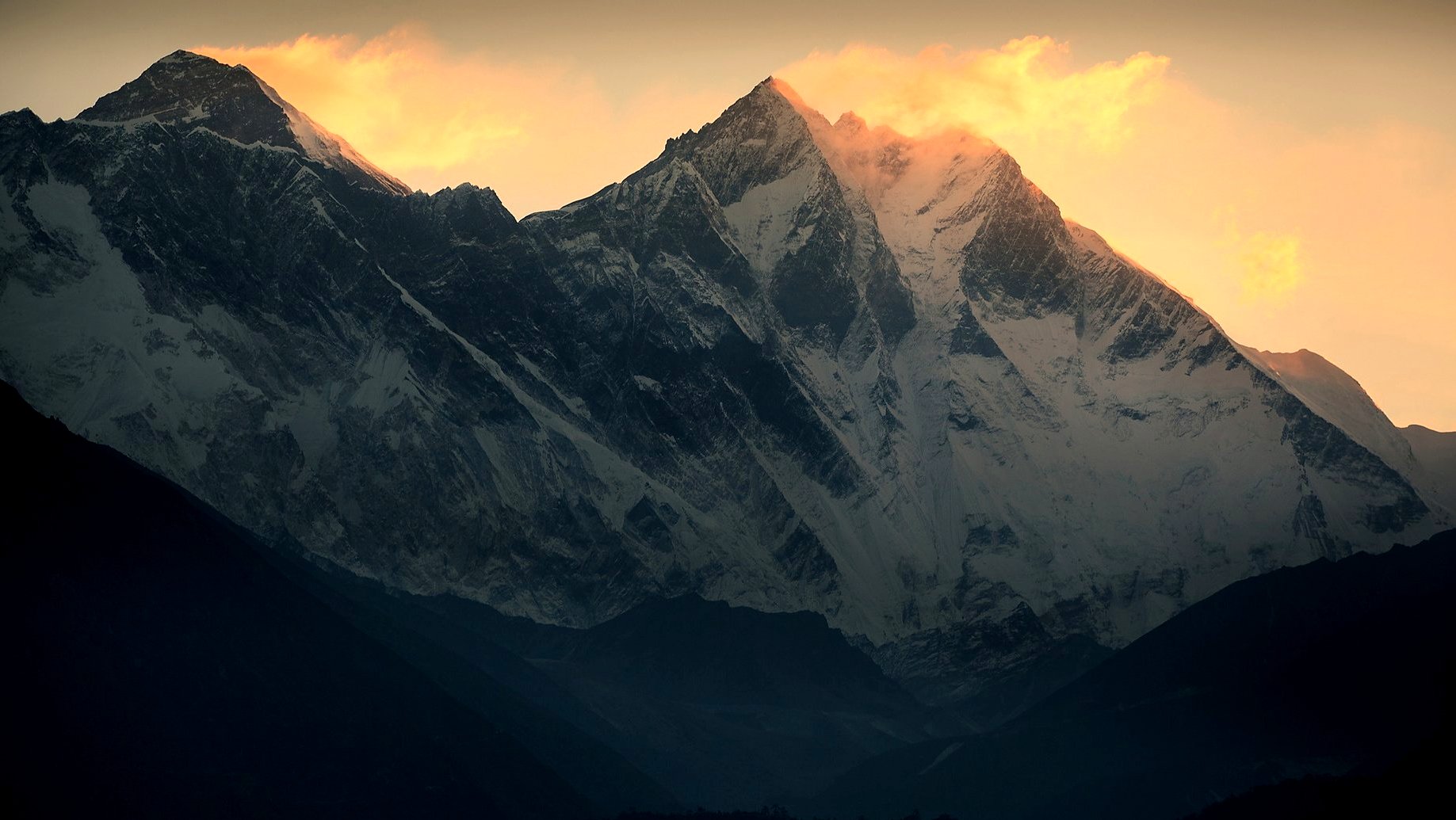
The Lhotse Expedition typically takes around 50 to 60 days to complete. It requires climbers to possess advanced mountaineering skills, physical fitness, and mental fortitude. The journey is a test of endurance, determination, and respect for the challenges presented by the mountain and the forces of nature. It offers climbers the opportunity to push their limits, discover their inner strength, and witness the breathtaking beauty of the Himalayas.
History of Mount Lhotse Expedition
The history of Mount Lhotse expeditions dates back to the mid-20th century. A Swiss team led by Ernst Reiss and Fritz Luchsinger made the first climb of Mount Lhotse via the difficult West Face in 1956. The mountain's formidable reputation attracted international attention, prompting endeavors such as the Polish winter expedition in 1988-1989, which aimed for the first winter ascent but had to retreat due to harsh weather. Notably, in 2001, Czech climber Josef Rakoncaj achieved the first solo ascent of Mount Lhotse via the standard West Face route, leaving a mark in mountaineering history. Furthermore, Sherpa climbers have displayed incredible speed and endurance on the mountain, with Lakpa Sherpa setting the fastest known time for a female ascent in 2017 and Kami Rita Sherpa achieving the fastest known time for any ascent in 2018. These endeavors and achievements have contributed to the captivating history of Mount Lhotse expeditions, symbolizing the indomitable spirit and dedication of mountaineers.
Highlights of the Lhotse Expedition
- Breathtaking views of the Himalayan mountains, including Mount Everest and other prominent peaks.
- A variety of challenging climbing routes, such as the South Col Route and the West Face Route.
- Summiting Lhotse, the fourth highest peak in the world, and experiencing the exhilaration of reaching its summit.
- Sharing the base camp with climbers attempting to summit Mount Everest, creating a unique and vibrant mountaineering community.
- Immersion in the Sherpa culture, with opportunities to interact with local communities and learn about their traditions and way of life.
- Personal growth and a sense of accomplishment through overcoming physical and mental challenges.
- Experiencing the raw beauty of the mountainous terrain, from serene base camps to steep and icy slopes.
- An opportunity to disconnect from the modern world and connect with nature in a profound and transformative way.
- The fulfillment of achieving a major mountaineering milestone and creating lasting memories of an epic adventure.
Routes for the Lhotse Expedition
South Col Route
The South Col Route is the standard and most commonly used route for both Mount Everest and Lhotse Expeditions. Here is an overview of the South Col Route for the Lhotse Expedition:
Everest Base Camp: The journey begins at the Everest Base Camp (5,364 meters) in the Khumbu Valley of Nepal. Climbers spend time acclimatizing and preparing for the ascent.
Khumbu Icefall: Climbers navigate through the treacherous Khumbu Icefall, which is a section of shifting glaciers and towering ice seracs. This challenging section requires careful negotiation of ladders, ice walls, and crevasses.
Camp 1: Located at approximately 6,065 meters, Camp 1 serves as the first major acclimatization camp. It provides a resting point for climbers to adjust to the altitude and prepare for further ascent.
Camp 2: Situated at around 6,500 meters, Camp 2 offers impressive views of Lhotse. Climbers spend additional time acclimatizing here and may make forays higher on the mountain for further acclimatization.
Camp 3: At approximately 7,200 meters, Camp 3 is a critical acclimatization point on the route. Climbers typically establish this camp on Lhotse's South Col, which is a high pass between Everest and Lhotse.
Camp 4 (South Col): Located at an elevation of around 7,900 meters, Camp 4 is the final camp before the summit push. It is established on the South Col, a narrow saddle on the ridge connecting Everest and Lhotse.
Lhotse Face: From Camp 4, climbers ascend the steep and icy Lhotse Face. This section requires technical climbing skills as they navigate the challenging terrain.
Lhotse Couloir: Beyond the Lhotse Face, climbers enter the Lhotse Couloir, a massive ice gully. This section is known for its steep slopes and requires careful ascent through the couloir.
Summit Push: After traversing the Lhotse Couloir, climbers continue their ascent towards the summit of Lhotse (8,516 meters). The final part of the climb involves negotiating the steep slopes and rocky sections leading to the summit.
It's important to note that the South Col Route is a demanding and high-altitude climb that requires advanced mountaineering skills, physical fitness, and proper acclimatization. Weather conditions and other factors may influence the timing and success of the expedition. The safety and well-being of climbers are paramount, and careful planning and preparation are essential for a successful Lhotse Expedition via the South Col Route.
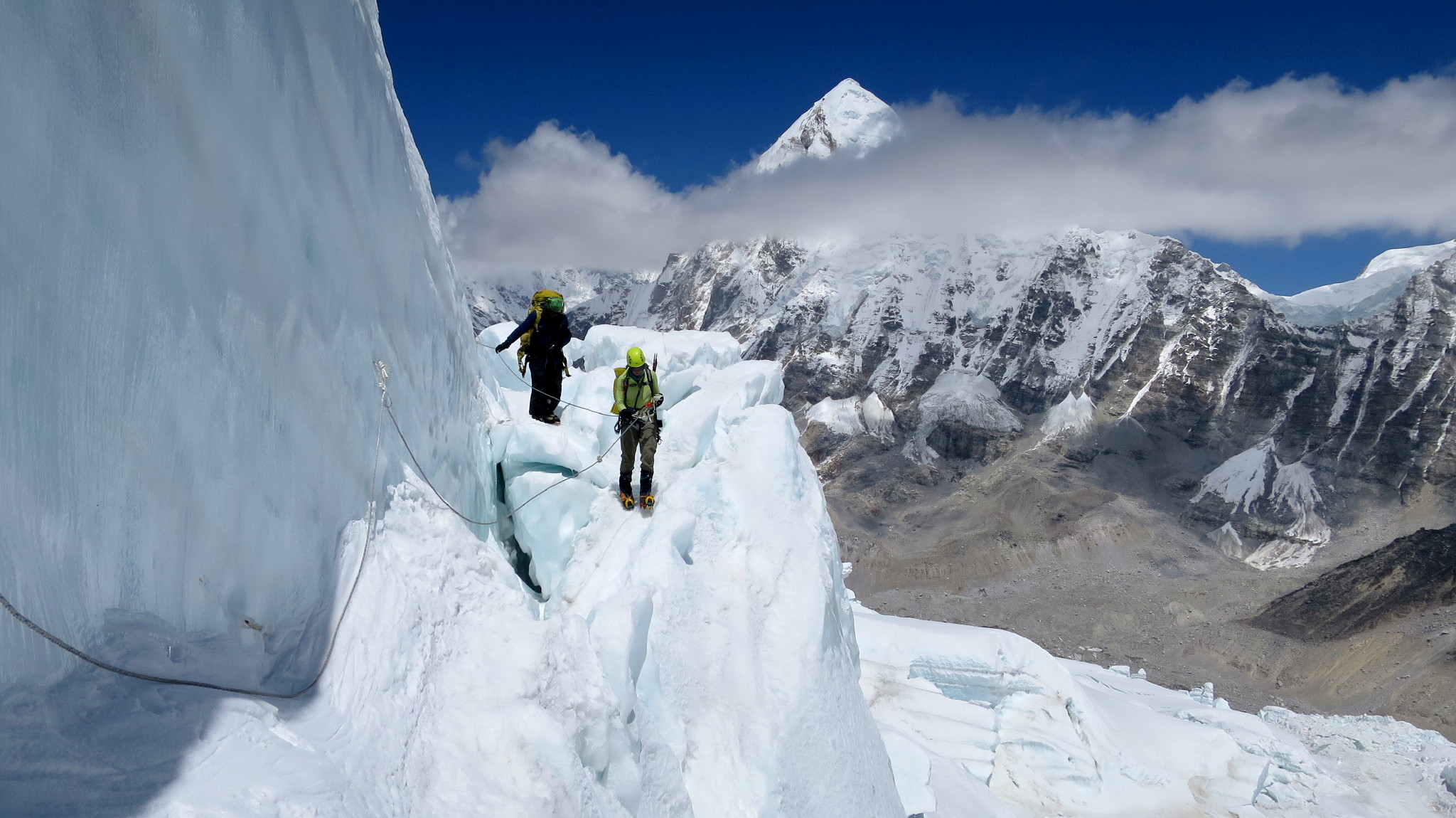
West Face Route
The West Face Route is a less commonly used and more technically challenging route for the Lhotse Expedition. Here is an overview of the West Face Route:
Base Camp: The journey starts at the base camp, similar to the South Col Route, located in the Khumbu Valley of Nepal. Climbers make necessary preparations and acclimatize before beginning the ascent.
Approach to the West Face: Climbers trek towards the west side of Lhotse, navigating through rugged terrain and moraines. They establish intermediate camps to acclimatize and prepare for the technical challenges ahead.
Camp 1: The first camp on the West Face Route is usually set up at an altitude of approximately 6,100 to 6,400 meters. Climbers rest, acclimatize, and further familiarize themselves with the route.
West Face Climb: The ascent continues on the steep and technical West Face of Lhotse. This section involves challenging rock and ice climbing, requiring advanced mountaineering skills and careful route finding.
Lhotse Couloir: Climbers approach the Lhotse Couloir, a massive ice gully, which is a prominent feature on the West Face. They navigate through the couloir, facing steep slopes and potential objective dangers.
High Camp: After ascending the Lhotse Couloir, climbers establish a high camp at an elevation of around 7,900 to 8,000 meters. This camp serves as the launching point for the final summit push.
Summit Push: From the high camp, climbers make the challenging push towards the summit of Lhotse (8,516 meters). They negotiate the remaining technical sections and steep slopes, often encountering mixed rock and ice terrain.
It's important to note that the West Face Route is considered more technically difficult and less frequently attempted compared to the South Col Route. It requires climbers to possess advanced mountaineering skills, experience with rock and ice climbing, and the ability to handle objective hazards. The West Face Route may involve more complex route finding and has a lower success rate due to its technical challenges. Safety, adequate acclimatization, and a skilled climbing team are crucial considerations when undertaking the Lhotse Expedition via the West Face Route.
Direct South Face Route
The Direct South Face route is considered one of the most challenging and dangerous routes on Lhotse. It involves climbing the dramatic and steep south face of the mountain. This route requires exceptional technical skills, as climbers face difficult rock and ice sections. The Direct South Face route is rarely attempted due to its extreme difficulty and objective dangers.
It's important to note that the choice of route may vary depending on the specific expedition, weather conditions, and the preferences and skills of the climbers. Safety considerations and the expertise of the climbing team are crucial factors in selecting the most appropriate route for the Lhotse Expedition.
Mountain views are seen during the Lhotse Expedition
During a Lhotse expedition, climbers are treated to breathtaking mountain views throughout their journey. Here are some notable mountain views that can be seen during a Lhotse expedition:
Mount Everest: As Lhotse is located just next to Mount Everest, climbers on a Lhotse expedition will have incredible views of the world's highest peak. The close proximity allows for stunning vistas of Everest's massive snow-covered summit and its surrounding ridges.
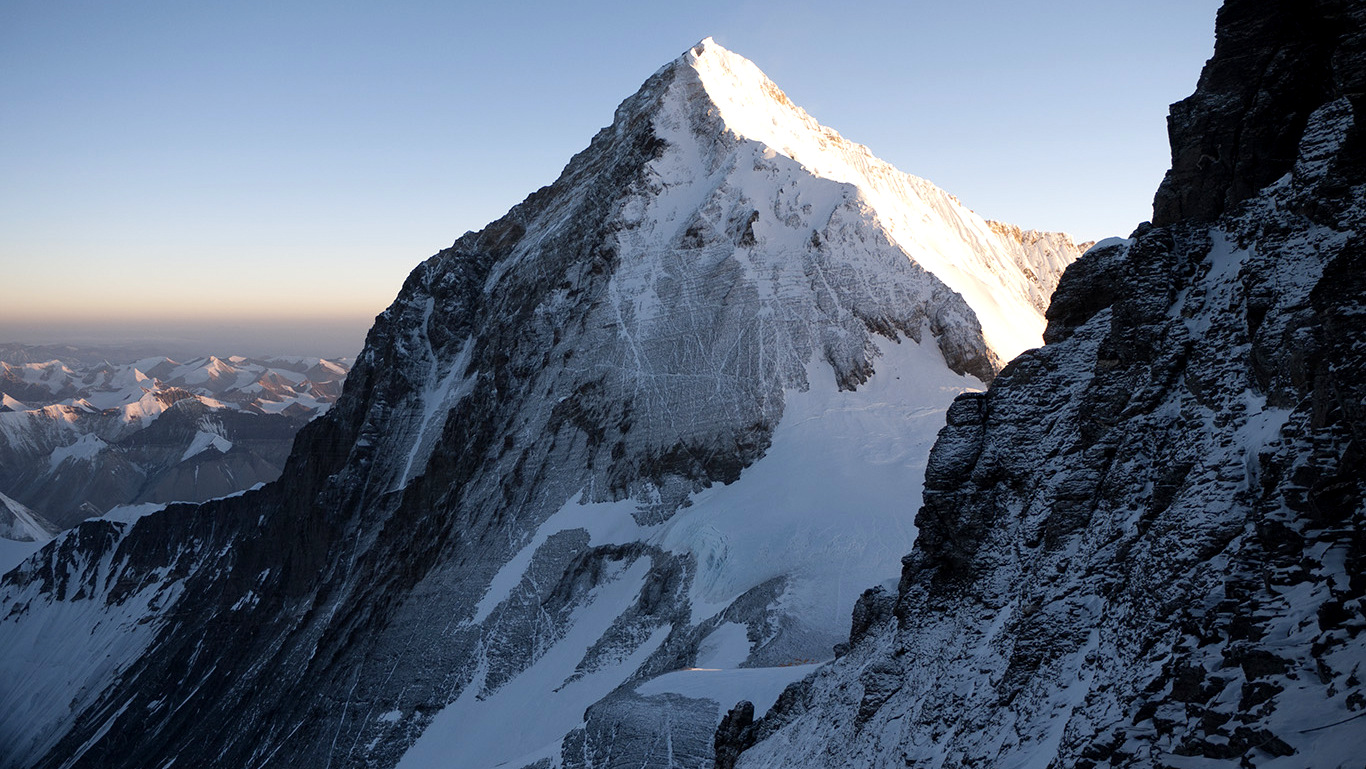
Lhotse Middle and Lhotse Shar: Lhotse itself is composed of three main summits: Lhotse Main, Lhotse Middle, and Lhotse Shar. Climbers will have awe-inspiring views of these stunning peaks, especially Lhotse Middle and Lhotse Shar, as they ascend the mountain.
Nuptse: Nuptse is another prominent mountain located in the Khumbu region, near Everest and Lhotse. During the Lhotse expedition, climbers will have panoramic views of Nuptse's impressive ridge and glaciated slopes.
Ama Dablam: Ama Dablam, known for its iconic pyramid-shaped peak, is another majestic mountain visible during a Lhotse expedition. It's striking form and elegant ridges offer a picturesque backdrop along the trekking and climbing routes.
Cho Oyu: Although Cho Oyu is located in a different region, it is visible from certain vantage points during the Lhotse expedition. Cho Oyu, the sixth-highest mountain in the world, showcases its towering presence and glaciated slopes.
Other Himalayan Peaks: Throughout the journey, climbers may also catch glimpses of other notable peaks in the Himalayas, including Makalu, Baruntse, Pumori, and countless other majestic summits.
The mountain views during a Lhotse expedition are truly awe-inspiring, offering a glimpse into the grandeur and majesty of the Himalayas. The constantly changing play of light and shadow on these peaks creates a mesmerizing and unforgettable experience for climbers.
How Difficult Is The Lhotse Expedition?
The Lhotse expedition is widely regarded as one of the most difficult mountaineering challenges in the world. It takes a high level of physical preparedness, sophisticated technical climbing abilities, and years of high-altitude mountaineering experience. Due to decreased oxygen levels and the potential for altitude sickness, Lhotse's considerable altitude of 8,516 meters (27,940 ft) presents substantial difficulties. In order to develop the strength and endurance needed to survive the physical rigors of the trip, climbers must engage in intensive physical training.
It is important to recognize the Lhotse expedition's technical challenges. Climbers must negotiate hazardous terrain that includes crevasses, rocky patches, and steep icy slopes. Technical climbing techniques like ice climbing, mixed climbing, and fixed line ascents are frequently used on the route. An additional challenge is the exposure to erratic weather conditions, such as extremely cold temperatures and strong gusts.
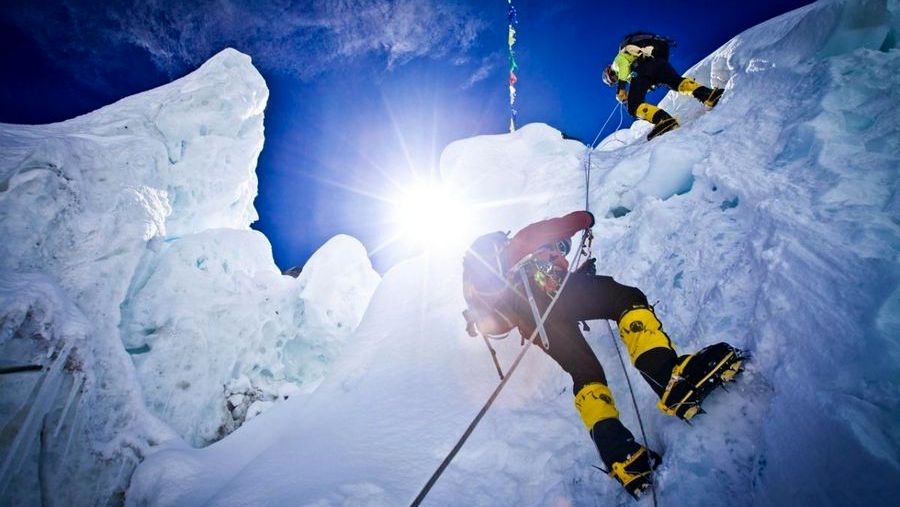
In addition, planning a successful Lhotse expedition might be challenging logistically. Permits must be obtained, logistics must be planned, a qualified support crew must be assembled, and supplies must be managed in a remote and difficult environment.
The Lhotse expedition is advised for highly talented and experienced mountaineers who have already accomplished substantial climbing exploits and have prior expertise at high elevations because of the mix of physical, technical, and logistical demands. In order to enhance the likelihood of success and safety on this incredibly challenging and demanding adventure, proper training, acclimatization, and planning are crucial.
How to prepare for the Lhotse Expedition
Preparing for the Lhotse Expedition requires comprehensive planning and thorough preparation. Physical fitness is crucial, so engage in a well-rounded fitness regimen that includes cardiovascular exercises, strength training, and hiking on varied terrains to build endurance and strength. Acclimatization is essential for tackling high altitudes, so plan your expedition schedule with gradual ascents and include rest days at different elevations to allow your body to adapt. Develop advanced mountaineering skills through prior experience with ice climbing, rock climbing, and technical gear handling. Invest in high-quality mountaineering gear and ensure it is tested and familiarized before the expedition. Mental preparation is key, so cultivate mental resilience, determination, and a positive mindset to overcome challenges and make sound decisions. Gain expedition experience by climbing other challenging peaks and learning from seasoned mountaineers. Focus on teamwork, communication, and trust-building with your climbing partners. Proper nutrition, hydration, and safety measures should be prioritized. Obtain the necessary permits and permissions, and make logistical arrangements well in advance. Consider hiring experienced guides or joining reputable expedition companies for guidance, support, and safety.
Permits for the Lhotse Expedition
To undertake the Lhotse Expedition, climbers are required to obtain various permits and permissions. Here are the main permits necessary for the Lhotse Expedition:
Lhotse Climbing Permit: This permit is issued by the Nepal Mountaineering Association (NMA) and is the primary permit required for climbing Lhotse. It grants climbers permission to ascend the mountain and specifies the duration of the expedition. The permit fee varies depending on the number of climbers in the team and the chosen route.
Sagarmatha National Park Entry Permit: Lhotse is located within the Sagarmatha National Park, a protected area in Nepal. Every member of the expedition team must obtain a Sagarmatha National Park Entry Permit. This permit allows access to the park and helps support conservation efforts in the region. The permit can be obtained from the Nepal Tourism Board or the Department of Immigration in Kathmandu or at the park entrance in Monjo.
TIMS Card: The Trekkers' Information Management System (TIMS) card is required for trekkers and climbers in the Everest region, which includes Lhotse. The TIMS card helps track visitors and ensure their safety. There are two types of TIMS cards: one for organized trekkers and another for independent trekkers.
Everest National Park Entry Permit: In addition to the Sagarmatha National Park Entry Permit, climbers may also be required to obtain an Everest National Park Entry Permit. This permit is specific to the Everest region and includes areas beyond the Sagarmatha National Park boundaries.
It is important to note that the permit requirements and fees can change, and it is advisable to consult with a reputable trekking agency or the Nepal Mountaineering Association for the most up-to-date information on the specific permits required and their associated costs for the Lhotse expedition. They can guide you through the application process and assist in obtaining the necessary permits for a successful and legal climb.
Best Season for Lhotse Expedition
The Lhotse Expedition can be attempted during different seasons, each offering unique challenges and considerations. Here's an overview of all four seasons of the Lhotse Expedition:
Spring Season (April-May)
Spring is widely regarded as the best season for the Lhotse Expedition. The weather is relatively stable, with milder temperatures and lower wind speeds compared to other seasons. The days are longer, providing more daylight for climbing and better visibility. The spring season aligns with the Everest climbing season, allowing climbers attempting both peaks to share resources and support. However, this popularity can also lead to more crowded routes and higher competition for resources.
Base Camp: Temperatures at Base Camp can range from around -10°C (14°F) to -15°C (5°F) during the daytime, while at night, they can drop further to -20°C (-4°F) or even lower.
High Camp: Temperatures at the High Camp can range from around -20°C (-4°F) to -30°C (-22°F) during the daytime and drop even lower at night, reaching -30°C (-22°F) or lower.
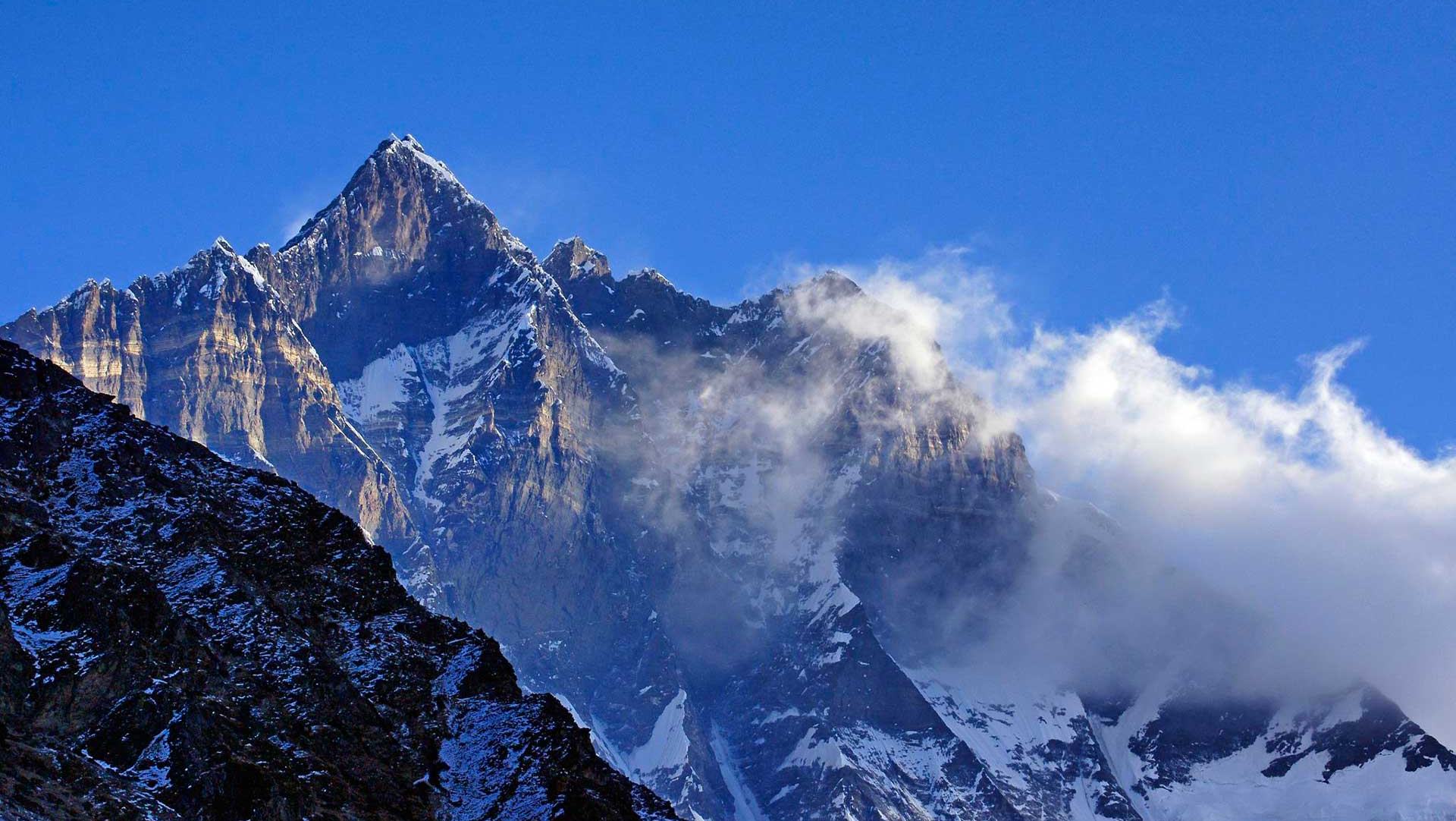
Summer Season (June-August)
The summer season is characterized by the monsoon season in the Himalayas, bringing heavy rainfall and high humidity. As a result, climbing conditions on Lhotse are extremely challenging and risky during this season. The mountain is prone to frequent avalanches, rockfall, and unstable conditions due to melting glaciers. The summer season is generally not recommended for the Lhotse Expedition due to these hazardous conditions.
Base Camp: Temperatures at Base Camp can range from around 0°C (32°F) to 5°C (41°F) during the daytime, while at night, temperatures can drop to around -5°C (23°F) or slightly lower.
High Camp: Daytime temperatures at the High Camp can range from around -5°C (23°F) to 0°C (32°F) or slightly higher, with nighttime temperatures dropping to around -10°C (14°F) or lower.
Autumn Season (September-November)
The autumn season is the second most popular season for the Lhotse Expedition. The weather is generally stable, with clear skies and reduced precipitation. The temperatures start to cool down, especially at higher altitudes, but they are still relatively moderate. The autumn season offers excellent visibility and fewer climbers on the mountain compared to the spring season, allowing for a more tranquil climbing experience. However, it's important to note that weather conditions can vary, and occasional storms or unpredictable weather patterns may still occur.
Base Camp: Temperatures at Base Camp can range from around -5°C (23°F) to -10°C (14°F) during the daytime, while at night, they can drop further to -15°C (5°F) or lower.
High Camp: Temperatures at the High Camp can range from around -10°C (14°F) to -20°C (-4°F) during the daytime and drop even lower at night, reaching -20°C (-4°F) to -30°C (-22°F) or lower.
Winter Season (December-February)
Winter is another challenging season for the Lhotse Expedition. Extremely low temperatures, strong winds, and heavy snowfall make the mountain even more treacherous. The harsh winter conditions increase the risk of frostbite, hypothermia, and avalanches. The extreme cold and limited daylight hours pose significant challenges for climbers. The winter season is typically avoided for the Lhotse Expedition, with only a handful of experienced mountaineers attempting it under specialized winter climbing expeditions.
Base Camp: Temperatures at Base Camp can range from around -15°C (5°F) to -20°C (-4°F) during the daytime, while at night, they can drop significantly lower, reaching -20°C (-4°F) to -30°C (-22°F) or even lower.
High Camp: Daytime temperatures at the High Camp can range from around -25°C (-13°F) to -35°C (-31°F) or lower, with nighttime temperatures reaching as low as -40°C (-40°F) or even colder.
It's important to note that the choice of the season for the Lhotse Expedition should be based on individual abilities, experience, and preferences. It's always the best choice to get the latest update about weather conditions before starting the journey.
Accommodation and Meals During The Lhotse Expedition
During the Lhotse Expedition, climbers will have accommodation and meals arranged at various camps along the route. Here's an overview of accommodation and meals during the expedition:
Accommodation during the Lhotse Expedition
Teahouses
On the Lhotse Expedition, climbers normally set up their own camps at Base Camp and High Camp, in contrast to trekking excursions when lodging and meals are provided by teahouses. These camps, which climbers either bring with them or are provided by their expedition team, are made up of individual tents or tented camps. The main places to stay during the climb are these camps. Teahouses, where hikers can find basic housing, meals, and other amenities, are primarily found along well-established trekking routes like the Everest Base Camp climb. Climbers do not travel through teahouse sections on the Lhotse climbing route, which diverges from traditional trekking routes.
Camping
A crucial part of the Lhotse Expedition is camping, which gives climbers the necessary lodging for the duration of the ascent. Climbers establish their own tents or tented camps at Base Camp, which serves as the primary camp. Additional camps, referred to as High Camps, are constructed as they go higher. These campgrounds are made up of more modest, smaller tents that are positioned at various altitudes. Using only light, calorie-dense foods, climbers pack their own tents, sleeping bags, and cooking gear. It is essential to manage the camp properly, taking environmental factors and trash disposal into account. For a successful and enjoyable ascent, camping in the Lhotse Expedition requires careful planning, experience, and adherence to safety standards.
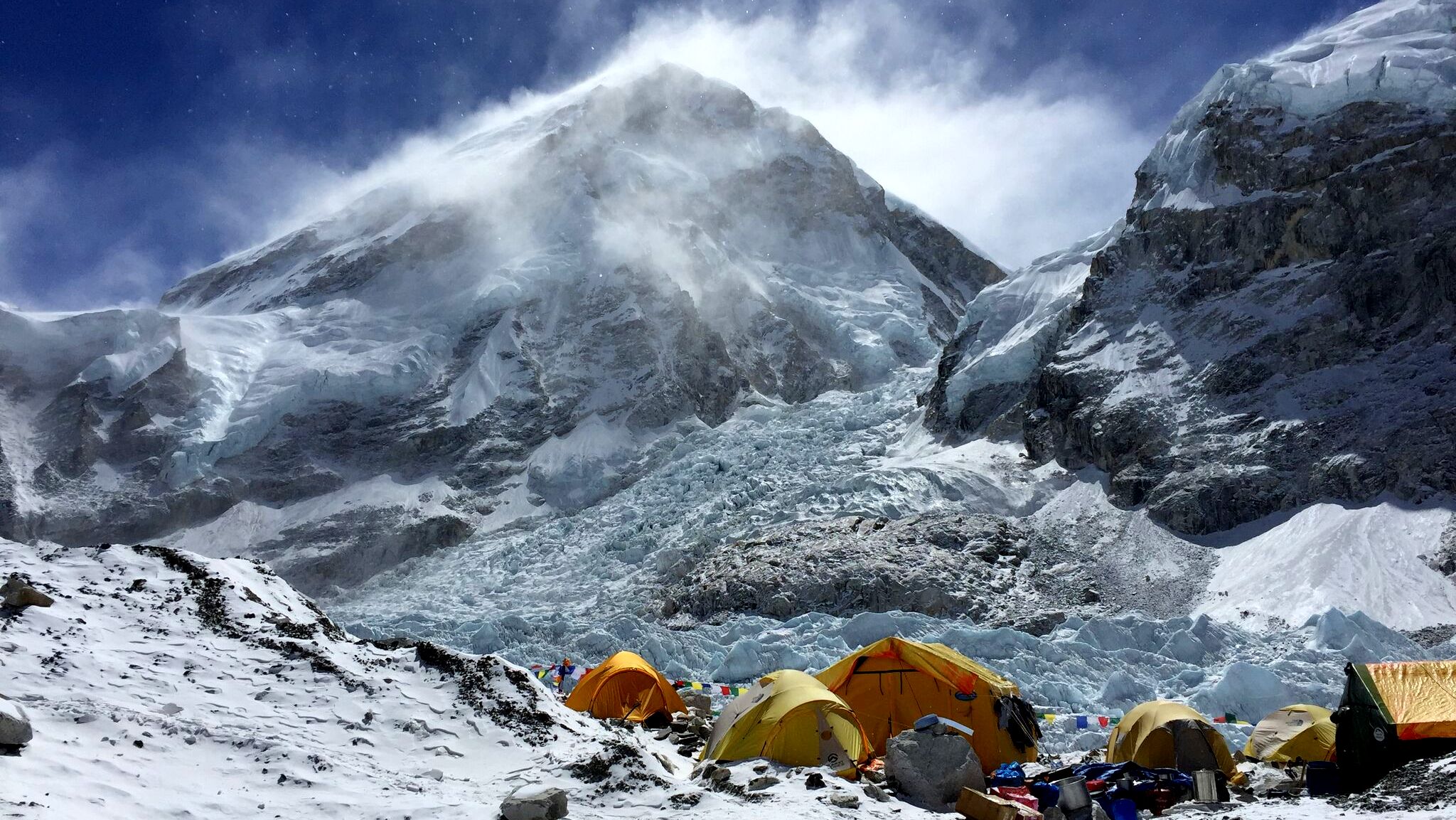
In the Lhotse Expedition, there are differences in meals between teahouses and camping.
Meals during the Lhoste Expedition
Meals in Teahouse
Trekkers generally get food along the famous trekking trails in Nepal's teahouses. Within the teahouse, these meals are typically served in communal or dining areas. Teahouse menus frequently feature a variety of cuisines, including traditional Nepali fare, meals prepared in the West, and straightforward international selections. Breakfast foods like eggs, toast, porridge, or pancakes may be served at teahouses, and lunch and dinner selections may include rice, noodles, curries, soups, and a variety of vegetables and meats. There are also hot and cold beverages like tea and coffee available. Teahouse lunches provide trekkers with a convenient and friendly dining experience where they can get to know other hikers.

Meals in Camping
Climbers on the Lhotse Expedition are responsible for providing their own food and cooking supplies while camping. Climbers or their support crews generally prepare their own meals while camping. Foods that are lightweight, filling, and simple to prepare in the hilly climate are brought by climbers. This frequently contains energy bars, meals that have been dehydrated, nuts, dried fruit, and other small snacks. Meals are prepared on portable stoves, and climbers can melt snow or ice to obtain drinking water. To ensure climbers have enough energy for the strenuous climb, cooking while camping needs careful preparation and management of food supplies.
Travel Insurance for the Lhotse Expedition
When embarking on the Lhotse Expedition or any high-altitude mountaineering adventure, it is crucial to have comprehensive travel insurance that covers the specific risks and challenges associated with such expeditions. Here are some key considerations for travel insurance:
- High-Altitude Coverage: Ensure coverage for high-altitude mountaineering, including the ascent of Lhotse, with an appropriate altitude limit.
- Medical Expenses and Emergency Evacuation: Verify coverage for medical expenses, emergency treatment, and evacuation related to high-altitude mountaineering.
- Trip Cancellation or Interruption: Look for coverage in case of unexpected circumstances forcing the cancellation or interruption of your expedition.
- Personal Belongings and Equipment: Confirm coverage for loss, damage, or theft of personal belongings and mountaineering gear.
- Search and Rescue: Ensure coverage for search and rescue operations in remote mountain environments.
- Policy Exclusions and Limitations: Carefully review exclusions and limitations, including pre-existing conditions and adventure sports restrictions.
- Adequate Coverage Limits: Check that the coverage limits meet potential expenses associated with high-altitude mountaineering.
- Policy Duration: Verify that the policy covers the entire duration of your expedition, including pre-and post-expedition activities or travel.
- Read and Understand the Policy: Thoroughly understand the terms and conditions of the policy and seek clarification if needed.
- Emergency Contact Information: Carry a copy of the insurance policy and emergency contact information during the expedition.
Remember that insurance requirements and coverage options may vary among providers and countries. It is advisable to consult with a reputable insurance company specializing in adventure sports or mountaineering insurance to find the most suitable policy for your specific needs and the Lhotse Expedition.
Checklist for the Lhotse Expedition
Preparing for the Lhotse Expedition requires careful planning and organization. Here's a checklist of essential items to consider for a successful and safe expedition:
Mountaineering Gear
- Mountaineering boots
- Crampons
- Ice axe
- Harness
- Helmet
- Ascenders and descenders
- Ropes and carabiners
- Climbing harness and slings
- Snow goggles
- Sunglasses with UV protection
- Mountaineering gloves
- Warm hats and balaclavas
- Insulated down jacket and pants
- Base layers, mid-layers, and outer shell clothing
- Thermal socks
- Gaiters
- Backpack and duffel bags
Camping and Sleeping Gear
- Tent (appropriate for high-altitude conditions)
- Sleeping bag (rated for extremely cold temperatures)
- Sleeping pad or insulated mattress
- Camp stove and fuel
- Cooking utensils and mess kit
- Water bottles and hydration system
- Water purification tablets or filter
Personal Equipment and Supplies
- Personal first aid kit
- Prescription medications
- High-altitude medicines (e.g., Diamox)
- Sunscreen (high SPF)
- Lip balm with SPF
- Personal toiletries
- Headlamp and spare batteries
- Multi-tool or Swiss Army knife
- Cash (local currency and emergency funds)
Technical Equipment
- GPS device
- Satellite phone or communication device
- Portable charger and spare batteries
- Camera or video equipment
- Mountaineering or trekking poles
Clothing and Accessories
- Waterproof and windproof jacket
- Waterproof and windproof pants
- Fleece or softshell jacket
- Insulated mid-layers
- Moisture-wicking base layers
- Thermal underwear
- Trekking pants and shorts
- Thermal gloves and liners
- Warm mittens
- Neck gaiter or scarf
- Hiking boots
- Hiking socks
Miscellaneous
- Climbing permits and necessary documents
- Map and compass
- Travel insurance (including evacuation coverage)
- Climbing guidebooks and route descriptions
- Snacks and high-energy foods
- Waterproof storage bags
- Repair kit (for gear and clothing)
- Personal identification documents
- Trekking or climbing poles
- Insect repellent
- Portable altitude chamber (PAC) bag (optional)
Tips For the Lhotse Expedition
- Prioritize physical fitness and endurance training to prepare your body for the demanding climb.
- Proper acclimatization is crucial for adapting to the high altitude.
- Gain mountaineering experience and acquire the necessary skills for climbing in high-altitude and extreme conditions.
- Prepare yourself mentally by visualizing the climb, practicing mental resilience techniques, and setting realistic expectations.
- Establish good teamwork and communication with your climbing partners.
- Invest in high-quality climbing gear and equipment.
- Keep a close eye on weather forecasts and be prepared for sudden changes in weather conditions.
- Stay hydrated and maintain a balanced diet to fuel your body during the expedition.
- Stay informed about potential hazards, follow safety protocols, and be prepared to make decisions based on the current conditions and the abilities of your team.
- Minimize your impact by properly disposing of waste, avoiding unnecessary disturbance to the surroundings, and respecting the local culture and customs.
FAQs (Frequently Asked Questions) for Mt. Lhotse Expedition in Nepal
Q: What is the Lhotse Expedition?
A: The Lhotse Expedition is a mountaineering endeavor to summit Mount Lhotse, the fourth-highest peak in the world located in the Everest region of Nepal.
Q: How difficult is the Lhotse Expedition?
A: The Lhotse Expedition is considered highly challenging and demanding. It requires technical climbing skills, experience in high-altitude mountaineering, and the ability to withstand harsh weather conditions.
Q: What permits are required for the Lhotse Expedition?
A: Climbers are required to obtain permits such as the Sagarmatha National Park Entry Permit and the Lhotse Expedition Climbing Permit. These permits are issued by the Nepal government and have specific fees and requirements.
Q: When is the best season to attempt the Lhotse Expedition?
A: The best seasons for the Lhotse Expedition are spring (April to May) and autumn (September to November). These seasons offer more stable weather conditions and better chances of success.
Q: How long does the Lhotse Expedition take?
A: The duration of the Lhotse Expedition varies depending on several factors, including the climbing route, acclimatization schedule, and weather conditions. Generally, it takes around 6-8 weeks from arrival in Nepal to summit and return to base camp.
Q: Can I join a guided expedition for the Lhotse Expedition?
A: Yes, joining a guided expedition is common for climbers attempting the Lhotse Expedition. Experienced mountaineering agencies and expedition organizers offer guided trips, providing logistics, support, and safety measures throughout the climb.
Q: What are the risks and challenges associated with the Lhotse Expedition?
A: The Lhotse Expedition involves risks such as altitude sickness, extreme weather, avalanches, crevasses, and technical climbing challenges. It requires careful planning, preparation, and adherence to safety protocols.
Q: Do I need previous mountaineering experience to attempt the Lhotse Expedition?
A: Yes, previous mountaineering experience is essential for the Lhotse Expedition. Climbers should have prior experience in high-altitude mountaineering, ice climbing, glacier travel, and technical climbing skills.
Q: How much does the Lhotse Expedition cost?
A: The cost of the Lhotse Expedition varies depending on factors such as the chosen expedition organizer, services included, and personal requirements. It typically involves expenses for permits, logistics, equipment, guides, and support staff.
Q: Can I climb Lhotse without climbing Mount Everest?
A: Yes, it is possible to climb Lhotse without climbing Mount Everest. However, both mountains share the same base camp, and the routes overlap up to a certain point before diverging. Climbers attempting Lhotse may use Everest's route for acclimatization before heading towards Lhotse.
Similarly other 8000-meter Mountain Expedition Packages
Makalu Expedition (8,463m)
Manaslu Expedition (8,163 m)
Dhaulagiri Expedition (8,167 m)
Kanchenjunga Expedition (8,586 m)
Mt. Everest Expedition (8848.86 m)
7000-meter peaks for Climbing and Expedition in Nepal
Gangapurna Expedition (7,455 m)
Pumori Expedition (7,145 m)
Tilicho Peak Expedition (7,134 m)
Annapurna South Expedition (7,219 m)
6000-meter peaks for Climbing and Expedition in Nepal
Mt Ama Dablam Expedition (6,812 m)
Island Peak Expedition (6,160 m)
Mera Peak Climbing (6,476 m)
Chulu West Peak Climbing (6,419 m)
Pisang Peak Climbing (6,091 m)
Singu Chuli Peak Climbing (6,501 m)
If you need any further information, please contact us by email: at [email protected], Phone: at +977- 985 100 5129 (WhatsApp)
#Tags
Tripadvisor
5.0928 reviewsGoogle
4.8114 reviewsFacebook
4.1 recommend44 ReviewsTrustpilot
4.1 Great(5 reviews)- Trusted by50K plus traveller




